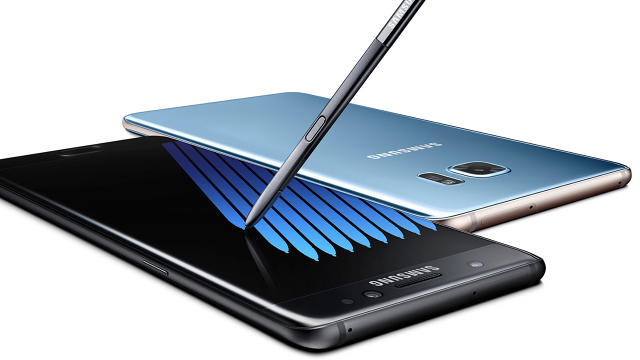Many of the latest trends in computing interaction have been ripped straight from the pages of science fiction. Our devices are offering voice-driven conversations with agents that ask follow-ups and gestures that allow us to manipulate mixed-reality objects without having to touch a surface. However, Samsung’s Galaxy Note 7 and the release of Windows 10 Anniversary Edition have again brought to the fore an input method that has little association with Captain Kirk or Minority Report hero John Anderton—the pen.
Stylus-based interfaces were among the earliest ways to control smartphones and, even earlier, handhelds such as the PalmPilot and Apple Newton. Twenty years later, we’re experiencing a “pennaisance.” The tiny disposable plastic sticks of yesteryear have given way to more sophisticated and expensive pressure-sensitive, erasure-capable, button-equipped instruments that need to draw power (proximally in the case of Samsung’s S Pen).

More Powerful, Not Yet Prevalent
While the digital pen’s functionality and responsiveness has improved dramatically, it hasn’t been able to catch up to touch as a primary interface. Despite a smattering of control options that Microsoft and Samsung offer once the instrument is in hand, the pen has settled into a range of use cases that fall primarily into three inkwells:
Forms. When it comes to the trade-offs between fingertip-oriented interfaces and mouse-driven ones, pens are the great input-precision equalizer. They facilitate quick selection of smaller interface options, but also let you sign your name via services such as DocuSign.
Notes. Much as with dictation and on-screen glass keyboards, the pen isn’t a great alternative to physical QWERTY for authoring long tomes and reports, but it’s useful for jotting down quick thoughts and messages, particularly if those include ad hoc diagrams or highlights. In contrast, the cold, constrained movements of keyboard and mouse often prove awkward and the finger too imprecise.
Art. When it launched the original Galaxy Note, Samsung hired caricature artists to draw attendees at CES. Since then, and particularly on larger tablets such as the Surface Pro and iPad, creating tools that accommodate creative and commercial artists has become a prime focus for Apple (with the iPad Pro and its Pencil) and Microsoft.

From Pen to Profit
Of the above applications, note-taking may have the broadest appeal as a purchase motivator. To that end, both Samsung and Microsoft have optimized their devices to allow quick pen-based entry without having to wake a device out of slumber and manually launch an app, highlighting other technologies in the process. For Microsoft, its OneNote app serves as a link in the process. For Samsung, the Galaxy Note S7 even allows a scrawl to serve as the image on the smartphone’s always-on display.
But the recent pen resurgence has been driven as much by shifting business priorities as by technical advances. With digital pens adding cost and bulk, and tasks such as annotation and art creation holding particular value to professionals, the pen has become associated with premium lines and more profitable devices in slowing or shrinking hardware categories. For instance, the Galaxy Note 7, which joins the Galaxy S7 Active as task-optimized alternatives to the more fashionable S7 Edge, sells for about $850, a premium over its Galaxy stablemates. Samsung has also targeted businesses in other ways with the Note 7, providing an iris scanner to allow enterprise IT teams more security options and a Secure Folder for keeping personal and business files separate.
In the tablet category, Apple directly monetizes the Apple Pencil as an optional accessory for the iPad Pro, which is helping to grow the company’s tablet-related revenue. And while Microsoft includes its pen with the Surface Pro, its support of new “Ink” features in the Windows 10 Anniversary Update aims to help other PC makers sell more “two-in-one” hybrid laptop/tablets, as touch screens did a couple of years ago.

Long Live Paper
Today’s pen input provides many of the best attributes from the worlds of ink and electrons in ways we take for granted when working with digital content. Modern platforms can offer conversion of ink to editable text and can search or translate text written in digital ink. Digital ink can be altered instead of having to be erased and re-created. And multi-mode interfaces also allow us to quickly manipulate objects around ink. A great example is the multitouch-enabled on-screen ruler tool that creates straight lines in Windows Ink applications.
But there’s another reason why pen-enabled devices are better suited to more serious, considered applications than casual spontaneous ones. Smartphones and tablets still can’t beat paper’s low price and high degree of flexibility: There is no e-paper device inexpensive enough to substitute for how the sticky note is used in the real world. (Sony’s Digital Paper System, which has seen a recent price reduction, still caters to pros at $600.) Digital greeting cards personalized with a thoughtful note can’t be handed to a person or affixed to flowers.
Despite decades of attempts to facilitate on-the-fly content transfers, ranging from infrared beaming to Bluetooth, it can still be too cumbersome to share the notes or sketches you created with a digital pen. But at least the input end of it is catching up. Perhaps the solution will one day be designed—maybe even on something other than a napkin.
Fast Company , Read Full Story
(43)